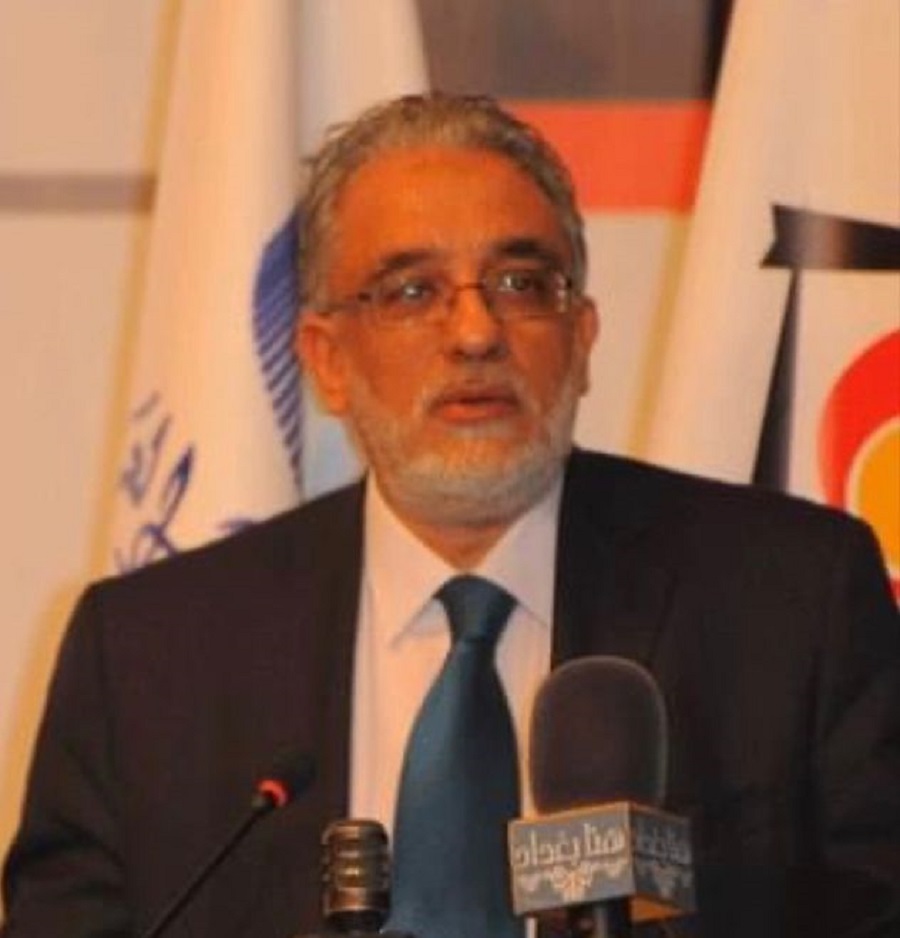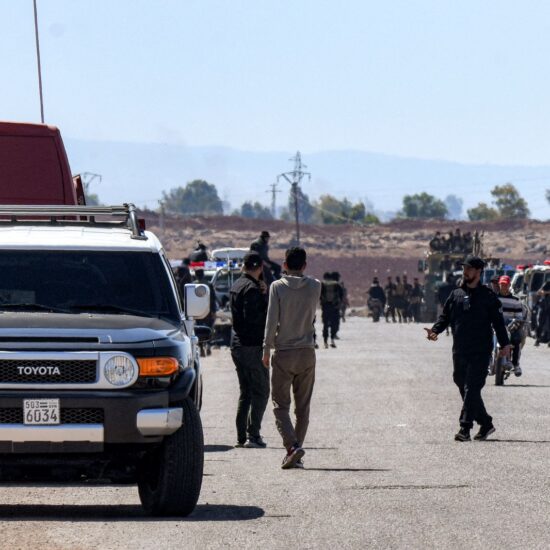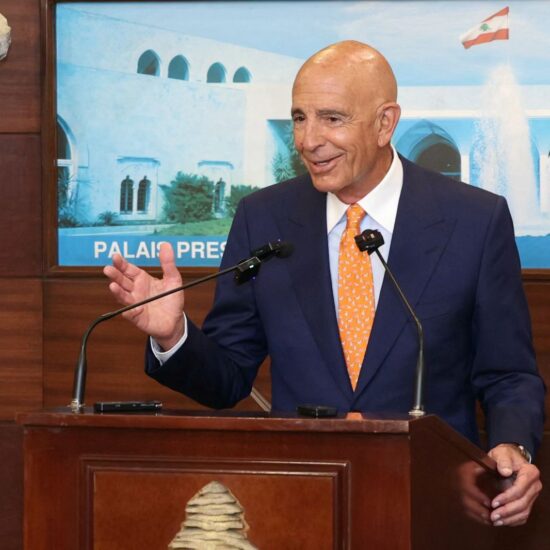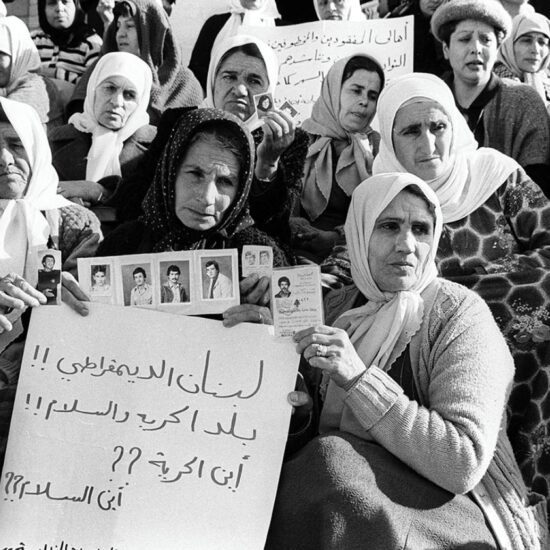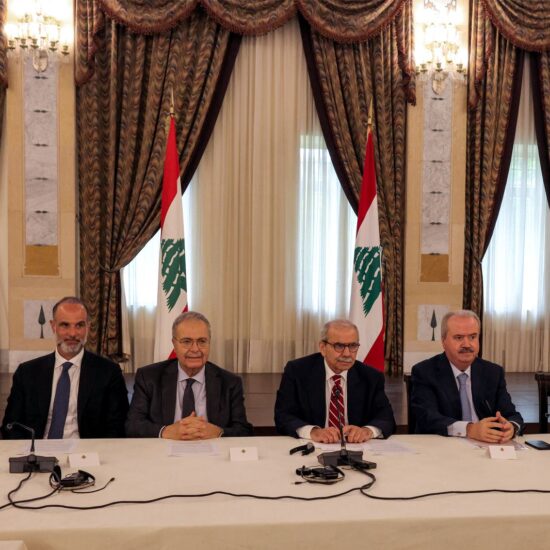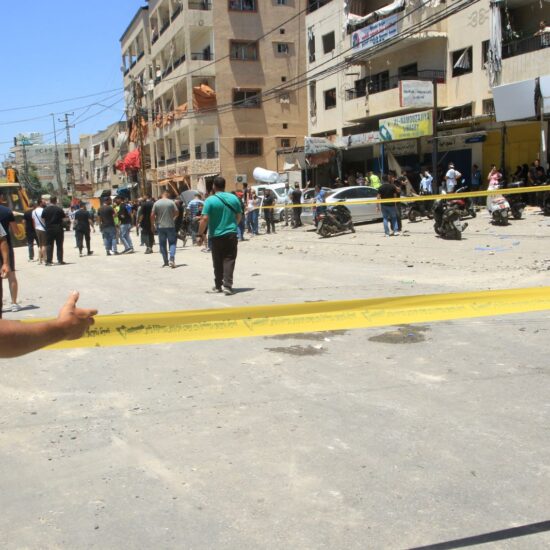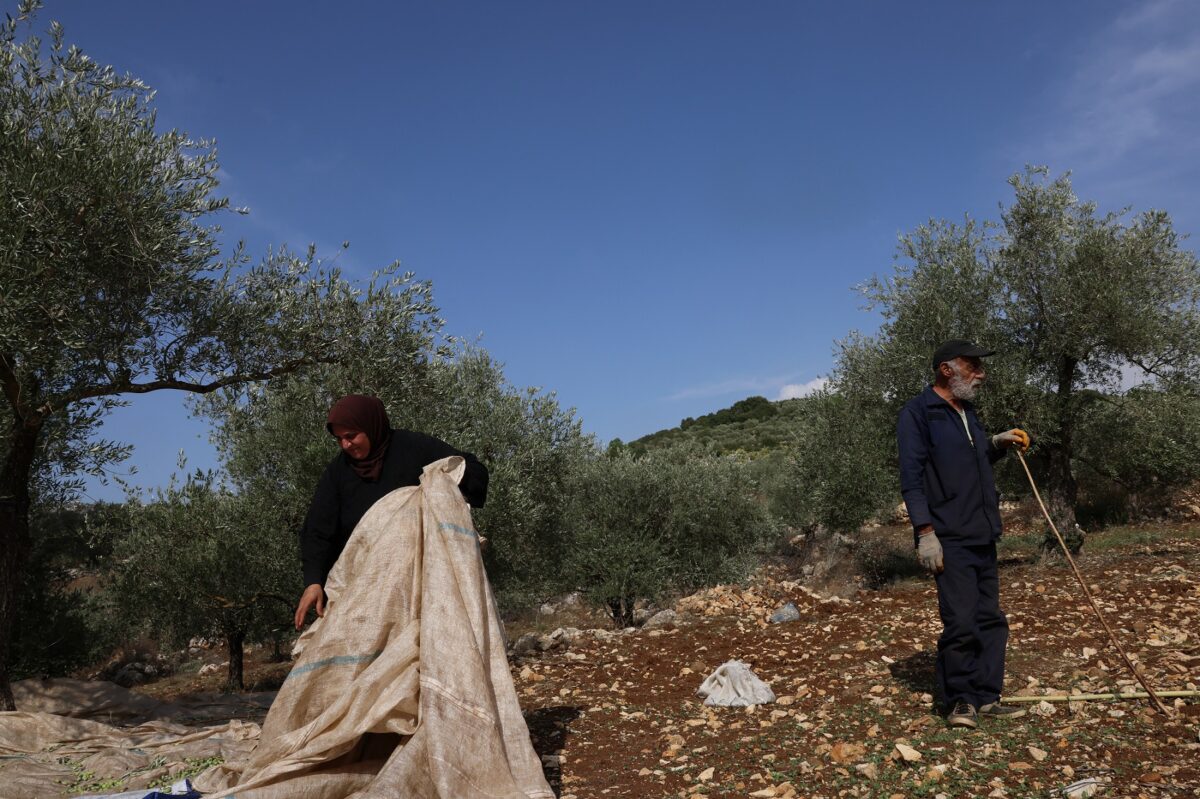
Economic decline and environmental degradation threaten agricultural livelihoods and sustainability, Maan Barazy takes a look at the ongoing conflict's impact on the South’s agricultural sector.
In the initial stages of the Southern front’s activation, attention was primarily directed at the impact on seasonal crops. Five months in, the possibility of an open conflict persists, posing a threat of further losses and damage. The combat has led to soil pollution, displacement of farmers, disruption of supply chains, and destruction of infrastructure, which undermines the principles of sustainability and ecological balance that are fundamental to organic farming.
Lebanon’s agricultural sector has been severely affected by the conflict. Since October 8, the agriculture in southern Lebanon has suffered tremendous devastation. The region, known for its rich fertility and ideal growing conditions, contributes significantly to the country’s agricultural output, producing 22 percent of its fruits and citrus, and 38 percent of its olives, as reported by the Ministry of Economy in Lebanon. The agricultural sector’s economic contribution is substantial, accounting for up to 80 percent of the local GDP in southern Lebanon, according to a UNDP report from December. A majority of families in the region depend on agriculture for their livelihood. However, these sources of income are seasonal and irregular, often failing to meet the basic needs of families. Agriculture is predominantly developed in regions with access to irrigation water, with irrigated areas being planted with fruit trees, while cultivation in arid areas is limited to olives and tobacco.
Government statistics highlight South Lebanon as a key agricultural area, extending from Sidon to Tyr, where intensive agriculture, including greenhouse farming, is practiced. Greenhouse agriculture in the region spans over 6,277 dounoums (as of 2010), with 78% dedicated to fruit plantations. The area of permanent agricultural land is 201,539 dounoums, with 38.9% used for olive cultivation and 31.6% for citrus fruits.
The military engagements between Hezbollah and the Israeli army coincided with the fruit and olive harvest season. The intensification of Israeli bombardments forced many agricultural workers to flee their homes in search of safety. The majority of those displaced originate from three districts along the southern border with Israel: Bint Jbeil (47 percent), Marjayoun (34 percent), and Sour (12 percent). Recently, 3,118 new displacements have been documented across several districts, including Bint Jbeil, Nabatieh, Marjayoun, Hasbaya, Baabda, and Sour.
Economic Losses
Lebanon has endured multiple conflicts with Israel, but a new war could have devastating effects on the entire country for several reasons. First, Lebanon’s economy is in shambles following the financial crisis that began in 2019, worsened by the ruling elite’s reluctance to implement necessary economic reforms. The country’s GDP has fallen to 40% of its 2018 level, with societal vulnerability at unprecedented levels. Second, the economic collapse has increased Lebanon’s dependence on capital inflows, which surged to nearly 90% of GDP in 2023, from 50% in 2018. Third, as a cash-based economy, Lebanon’s reliance on importing dollar banknotes is crucial. Consequently, if ports and airports were rendered inoperative, Lebanon would be cut off from accessing cash. Lastly, donors who previously assisted with expenses are now hesitant, given the failure of Lebanese leaders to enact reforms. Lebanon, along with Jordan and Egypt, could experience a two to four percent loss in GDP as a result of the war, with Lebanon facing particular economic risk, according to a UNDP report from December 19th. This decline in GDP since October 7th, the onset of the war, represents “a massive loss,” stated UNDP regional director Abdallah al-Dardari.
The World Bank’s report recalls the 2006 conflict in Lebanon, which resulted in “an economic production loss of 10.5 percent of GDP and direct and indirect damages of 3.1 billion dollars.”
Agriculture Sector
Rabih Mattar, an Agricultural Engineer and Lecturer at the American University of Beirut (AUB), informed NOW LEBANON that the conflict is occurring during a critical period for agriculture (harvesting and land preparation for the next season). Agricultural lands have been significantly affected, with damage including physical degradation, chemical pollution, and contamination from explosive remnants, leading to reduced soil fertility.
The Food and Agriculture Organization (FAO) reports that 63 percent of farmers have encountered challenges in safely accessing their fields, with 26 percent compelled to completely abandon their agricultural lands due to displacement. Furthermore, 23 percent of farmers have reported a decrease in harvest yields, and 85 percent of farming households have faced difficulties in transporting their agricultural products. Overall, 72 percent of farmers have reported income losses.
Farmers have expressed concerns over losing their crops due to the inability to access fields near the border strip or to expand production and export capabilities. However, as the conflict in Gaza and South Lebanon has entered its sixth month, many in the South have faced complete collapse across various production sectors and aspects of daily life, not just agriculture.
Mattar notes that the main crops affected include olives (and consequently olive oil production), carob, grains, and other winter crops. “In addition to the losses in production, thousands of trees were destroyed. For instance, 47,000 olive trees were reported to have been burned by phosphorus bombs,” he stated.
Recent data from Lebanon’s National Early Warning System platform indicates that, up until January 1, 2024, approximately 8 million square meters (800 hectares) of land have been affected by fires “resulting from Israeli attacks.”
The livestock, poultry, and aquaculture sectors also face long-term recovery challenges, according to Mattar. Moreover, forest fires significantly impact natural ecosystems, impeding recovery due to disrupted ecological processes.
It remains uncertain whether other areas of Lebanon can compensate for the supply shortages. Mattar believes that regions such as west Bekaa or southern Bekaa for olive trees, and Akkar valley for citrus and banana plantations, might offer some relief.
White Phosphorus
Mattar highlighted that “Israel has employed white phosphorus toxic material shelling, which is highly toxic to various organisms, causing documented deaths among mammals, birds, and fish, with lasting environmental damage and classification as very toxic to aquatic life.”
On November 16, it was reported that 5,140,000 square meters of land in southern Lebanon were scorched by white phosphorus and flare bombs, based on surveys conducted by the National Council for Scientific Research (CNRS). Agriculture Minister Abbas Hajj Hassan stated that at least 50,000 olive trees have been lost. The Tahrir Institute suggests that national olive production profits have been impacted, with potential losses to the olive harvest typically amounting to $23 million in exports – according to 2020 data.
The use of phosphorus shelling has contaminated crops, surface and groundwater, posing threats to livestock and human health. Additionally, fires have affected various agricultural areas, including olive groves, citrus farms, banana farms, and pasture lands, according to Mattar.
The prolonged and difficult-to-control burning of white phosphorus extends beyond immediate destruction, creating ongoing and unpredictable hazards that pose serious risks to human health, safety, and the environment.
“Water infrastructure has been damaged, risking the spread of water-borne diseases and environmental degradation, underscoring the critical need for access to clean water for public health and community wellbeing,” Mattar claimed.
Soil quality in the conflict area has been compromised by physical destruction and pollution due to the spread of heavy metals and toxic compounds from explosive weapons, with white phosphorus usage further diminishing fertility and increasing soil acidity. “The conflict will adversely affect solid waste management, leading to unsafe landfilling and burning,” he said.
The American University of Beirut’s Nature Conservation Center has identified four previous instances of Israel using white phosphorous. However, the Tahrir Institute for Middle East policy notes that the recent conflict from October 8, 2023, to the present “marks the first time agricultural areas in Lebanon have been openly and extensively targeted.”
According to the same research, “Cleanup is feasible but costly, as evidenced in historical cases like Agent Orange after the Vietnam War. The decision to clean up depends on detected concentration levels on the ground, and the significant financial burden may also hinder cleaning any potential contamination sites.”
Preliminary Estimates of the Economic Losses Can Be Summarized as Follows:
- A report published by The Policy Initiative Think Tank (TPI) says that while Lebanon was expecting 1.29 million tourists between October 2023 and February 2024, it is likely that this target will fall short by 300,000 tourists, assuming the 23% drop in arrivals in the month of October 2023 holds. Given that tourists, on average, spend $1,500 per visit based on 2022 numbers, the economic loss in tourism inflow is estimated at about $450 million.
- The investment sector is also suffering. For instance, foreign real estate investment in southern regions is set to significantly drop. In fact, October 2023 recorded a countrywide 60% year-on-year decrease in real estate transactions and a 40% decrease compared to the 12-year average (2011-2022), indicating broader hesitancy among investors. Projecting this trend, a 40% loss in foreign direct investment (FDI) over six months translates to an estimated $105 million loss. The total loss in inflows for Lebanon, considering just these two sectors, could total about $550 million.
- In the event of a prolonged conflict, both tourism and real estate investment will continue to suffer, depriving the country of further inflows. For instance, the number of tourists visiting Lebanon stands to drop by 900,000 between October 2023 and September 2024, resulting in an estimated loss of $1.35 billion in tourist receipts. Similarly, a prolonged conflict would exacerbate hesitancy in the real estate sector, and FDI losses could reach approximately $210 million over one year. The total land area affected by fires due to shelling in southern Lebanon reached 1,897 hectares.
- Based on satellite imagery, 91 villages have been subject to cross-border attacks from Israeli forces since the start of the war, and dozens of buildings completely destroyed, according to a report in December by UNDP. Infrastructure and economic and social services have been significantly disrupted.
- As of February 20, 89,817 individuals (52 percent females) have been displaced from south Lebanon due to the ongoing hostilities along the Blue Line, around a 2% increase over a week.
- As of February 21, the Lebanese Ministry of Public Health (MoPH) has reported a total of 195 killed and 719 people wounded.
Is There Hope for a Reconstruction Scheme?
The current uncertainty revolves around the state’s pledge to allocate $10 million, distributed through the Southern Council, to the affected individuals. However, the council’s and the government’s reputation is a concern for many Lebanese, especially Southerners who have experienced manipulation in compensation payments during previous conflicts.
The Southern Council’s promise of millions of dollars and the potential for the state to forego tax revenues in favor of Southerners does not fully address the economic and social consequences of this war. These consequences are intertwined with the ongoing economic crisis in Lebanon, pushing Southerners towards complete collapse.
Maan Barazy is an economist and founder and president of the National Council of Entrepreneurship and Innovation. He tweets @maanbarazy.
The views in this story reflect those of the author alone and do not necessarily reflect the beliefs of NOW.


